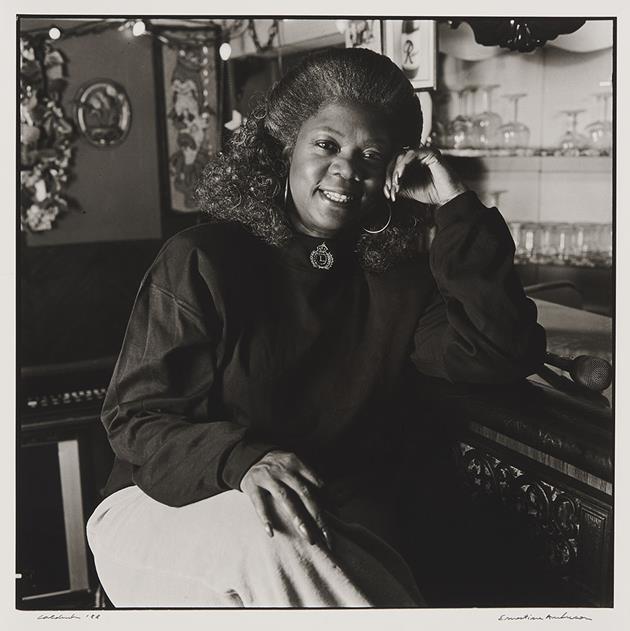Ernestine Anderson
negative 1988, printed 2022
In 1988, jazz historian and author Paul de Barros asked Eduardo Calderón to take portraits of Seattle’s jazz artists for his book, Jackson Street After Hours: The Roots of Jazz in Seattle (Sasquatch Books, 1993), the first comprehensive history of Seattle’s vibrant but largely forgotten jazz scene between 1918 and 1980. Musicians from New Orleans and Chicago joined ranks with local bands, forging a supportive community where Black and white musicians melded musical styles and nurtured their budding careers. Many garnered national reputations, such as Ray Charles (1930–2004), Quincy Jones (born 1933), and Ernestine Anderson (1928–2016), who came to Seattle from Texas as a teen and whose voice de Barros described by Jones as “honey at dusk.” She toured with some big-name bands but returned to Seattle as a leading light. Floyd Standifer (1929–2007) was a versatile artist, singing and playing trumpet and saxophone in the swing and bebop styles. Jones, a Seattle legend and national treasure, was fostered in his own artistry by many Seattle musicians. Today, he is one of the most heralded musicians, songwriters, composers, and producers of our time.
Calderón, an internationally known photographer living in Seattle, captured some of the living jazz legends using a 1950s Rolleiflex. To create his intimate images, Calderón photographed his sitters in their homes, with the musicians surrounded by instruments, objects, and memorabilia important to them. These striking portraits are part of the chronicle of Seattle’s remarkable jazz history and the history of American music.
Silver gelatin print
16 x 20 in. (40.6 x 50.8 cm)
General Acquisition Fund
2022.32.1
Provenance: The artist; purchased from artist by Seattle Art Museum, Seattle, Washington, 2022
Photo: Scott Leen

